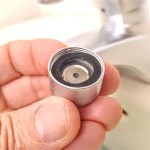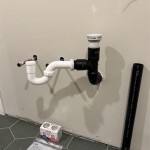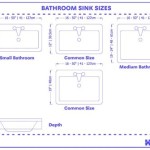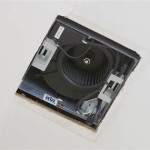How to Repair a Bathroom Faucet Handle
A bathroom faucet handle that is loose, wobbly, or difficult to turn can be a frustrating problem. Fortunately, most faucet handle repairs are relatively straightforward and can be completed by a homeowner with basic DIY skills. This article will guide you through the process of identifying the problem, gathering the necessary tools and supplies, and repairing the faucet handle.
Step 1: Identify the Problem
Before you start taking apart your faucet, it is essential to understand the nature of the problem. There are several common issues that can affect a bathroom faucet handle:
- Loose handle: This can be caused by a worn-out set screw or a loose mounting nut.
- Wobbly handle: This may indicate a broken or worn-out stem, which connects the handle to the valve.
- Difficult to turn handle: This can be caused by a buildup of mineral deposits, a worn-out O-ring, or a stuck valve.
Once you know what's wrong, you can move on to the next step.
Step 2: Gather Tools and Supplies
The tools and supplies you'll need will depend on the specific problem and the type of faucet you have. However, these items are generally useful for most faucet handle repairs:
- Screwdriver set: You'll need both Phillips and flathead screwdrivers for removing screws and accessing internal faucet components.
- Adjustable wrench: This is helpful for tightening or loosening nuts and other fittings.
- Channel-lock pliers: These are useful for gripping and turning stubborn nuts or components.
- Replacement parts: If necessary, you'll need to purchase the appropriate replacement parts, such as a new handle, stem, set screw, or O-ring. It's a good idea to have the model and brand of your faucet handy when searching for parts online or at a hardware store.
- Plumber's tape (Teflon tape): This will help seal the threads of the faucet components to prevent leaks.
- Cleaning supplies: Mineral deposits can be removed with a vinegar solution or commercial faucet cleaner.
- Rag or towel: This will help absorb water and wipe away excess cleaner or grease.
Step 3: Turn Off the Water Supply
Before you begin any repairs, it's crucial to turn off the water supply to the faucet. Typically, this is done by turning a valve located beneath the sink or near the faucet. Once the water supply is off, run the faucet briefly to ensure no water remains in the lines.
Step 4: Remove the Faucet Handle
The process for removing a faucet handle can vary depending on the model. However, it generally involves these steps:
- Locate the set screw: Look for a small screw located on the side or bottom of the handle. This screw secures the handle to the faucet stem.
- Loosen the set screw: Use a screwdriver to loosen the set screw. In some cases, you may need to gently pry the handle up with a flathead screwdriver to access the screw.
- Remove the handle: Once the set screw is removed, the handle should come off easily. If it's stuck, try gently wiggling it back and forth while pulling it upward.
Step 5: Inspect the Faucet Stem
Now that the handle is removed, you can inspect the faucet stem. This is the part that connects the handle to the valve. Look for signs of wear, damage, or mineral deposits. If the stem is cracked, broken, or heavily corroded, you'll need to replace it.
Step 6: Clean the Faucet Stem and Valve
Even if you don't need to replace the stem, it's a good idea to clean it and the valve to remove any mineral deposits. If the problem was a difficult-to-turn handle, this step may fix the issue. Use a cleaning solution (vinegar or commercial faucet cleaner) to loosen the deposits. Use a small brush, if necessary, to scrub the stem and valve thoroughly.
Step 7: Replace the O-Ring
Many faucet stems have an O-ring that seals the stem against the valve. If the O-ring is worn, cracked, or damaged, it can cause leaks and prevent the valve from sealing properly. Replace the O-ring with a new one if necessary.
Step 8: Reassemble the Faucet
After cleaning and inspecting the components, reassemble the faucet in reverse order. Make sure the stem is properly seated in the valve and that the O-ring is properly installed. Tighten the set screw securely, but don't overtighten it.
Step 9: Turn on the Water Supply
Carefully turn the water supply back on and check for leaks. If everything is working correctly, you've successfully repaired your bathroom faucet handle!
Remember that this is a general guide, and specific procedures may vary depending on the type of faucet. If you are unsure about any part of the repair process, consult a professional plumber.

How Do I Replace Bathroom Sink Faucet Handles Cleaning More

How To Tighten A Bathroom Faucet Handle

How To Tighten Faucet Handle Homeserve Usa

How To Fix Leaky Bathroom Handle Delta Faucet Model 4530 Series Hard Water

How To Fix A Stripped Faucet Handle In 10 Minutes Or Less Ricks Plumbing

How To Fix A Leaky Faucet Handle

Faucet Repair How To Fix Broken Ball Handle On A Bathtub

How To Fix A Leaking Faucet Without In The Handle Moen

How To Fix A Stripped Faucet Handle In 10 Minutes Or Less

Bathroom Faucet Handles Loose Wobbly Diy Fix
Related Posts







